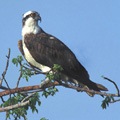 |
|
| |||||||
| Highlights . In Flower. .News . Events . Join us . 2008 Summary Look Out For
What's around:
N.B: NEW RIVER PATH
Regular rarities:
Please email Stoke Newington wildlife sightings to: recorder@TeRNS Key Sparrowhawks . . . Lesser Redpolls Great Northern Diver TeRNS publishes reports in good faith, but cannot always verify sightings. If you would like to become a member-supporter of TeRNS please send us your details @ TeRNS. There are no subscriptions - we exist as a voice for nature in Stoke Newington. If you would like to include a phone number, or other contact details, please do. If your partner would like to be a member please include their details. Information:
Posters and CD of local wildlife. ‘'Golden Wings'’ challenge. In recent years . . . The silver-white duck Feeding Stations Wildlife crime can be reported . . .
on the RSPB website. to the police Wildlife Crime Unit: 020 7230 8898. to the RSPCA: 0870 55 55 999 (24 hour emergency) Bird Flu: We recorded 97 bird species during 2008, one more than in 2007. Highlights among the bird sightings were an Osprey over Clissold Park on April 4th, our first record in the area. Two other firsts were found at the reservoirs - a Little Gull on August 31st, and an immature Iceland Gull on December 15th. During the year eight gull species were seen. The year began well with long-staying pairs of Brambling at our feeding station by the east reservoir, and Red-crested Pochard. A pair of Firecrests remained in Abney Park from October until the year’s end. Other notable sightings included Red Kite, Pied Flycatcher, Whinchat, a male Goldeneye and Green Sandpipers. Sparrowhawks bred locally, with 2 young seen. In total the number of bird species recorded in Stoke Newington at the year’s end stood at 126, with 114 around Stoke Newington Reservoirs. Mammals seen locally included Fox (with litters by the East reservoir and in Clissold Park), Wood Mouse (in Abney Park), and a Hedgehog beside the west reservoir. Noctule bats were seen regularly over the reservoirs. Common and Soprano Pipistrelle colonies remained healthy, with a large colony near the West Reservoir. The summer’s wet and cloudy weather affected butterfly records, with no sightings of White-letter Hairstreak, and below average numbers of Small Copper and Common Blue. Odonata were similarly affected, with several Banded Demoiselles by the New River a highlight. Wild flowers in Abney Park included Snowdrop, Dog’s mercury, Lesser Celandine, Bluebell, Ramsons, Creeping Jenny, Musk Mallow, Mullein, and Red Campion. Around the reservoirs were Colt’s-foot, Marsh Marigold, Bird’s-foot-trefoil, Purple-loosestrife, Feverfew, Common Toadflax and Woody Nightshade. Notable fungi in Abney Park included the scarce Aurantioporus fissilis and the colourful Phaeolus schweinitzii, both unusual in London. Other scarce fungi in Abney were Wrinkled Peach, Rhodotus palmatu, and the rare Pluteus aurantiorugosus. Special thanks to all our contributors throughout the year, especially Ed McDaid, Adam Hudson, Pat and Keith Cavanagh, Pete Langsdon, Gina Rackley, Carole Sandison, and Ben Hoare. |
||||||||
Stoke Newington, Hackney, London Wildlife & Nature - Birds, Butterfly, Dragonfly, Trees, Flora (Flowers), Fungi.
|
|||||||||
|
Website by www.johnprecious.co.uk © TeRNS |






